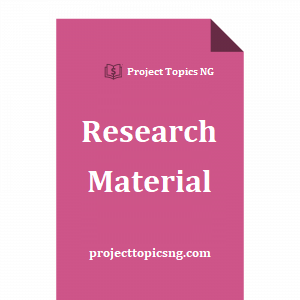Brief Introduction
Fraud is a `cankerworm’ that has eaten deep into the nation’s fabrics. It is visible in all sectors of the economy. In the financial sector, fraud is an `offshoot’ of financial crimes which covers offenses, which are securities, related and involve the movement, transfer or use of monetary instruments in circumstances, which render such acts unlawful.
The above definition can be extended to include any dishonest, unethical, or unprofessional conduct which results in financial loss to someone or institution for the benefit of another. Financial fraud includes but is not limited to the following, cheque-kiting, loan fraud, advance fee fraud, securities fraud, account opening fraud, insider-dealing clearing fraud, computer fraud, telex fraud, and money laundering.
Fraud as stated earlier is not peculiar to the banking industry but cuts across other sectors of the economy. Frauds in banks are not new, in fact, it is as old as the industry itself. But in recent times, the practice has assumed an alarming proportion. Sometimes, the act is carried out by outsiders while in most cases there is a collaborative effort between outsiders and staff to perpetuate this financial crime.
Table of Content
TITLE PAGE
APPROVAL PAGE
DEDICATION
ACKNOWLEDGEMENT
ABSTRACT
LIST OF TABLE
TABLE OF CONTENTS
CHAPTER ONE
INTRODUCTION
1.1 BACK OF THE STUDY
1.2 STATEMENT OF PROBLEMS
1.3 OBJECTIVES OF THE STUDY
1.4 SCOPE OF THE STUDY
1.5 RESEARCH QUESTIONS
1.6 SIGNIFICANCE OF THE STUDY
1.7 DEFINITION OF TERMS
CHAPTER TWO
2.0 LITERATURE REVIEW
2.1 THE CAUSES OF FRAUD IN BANKING SECTOR
2.2 THE EFFECT OF FREQUENT FRAUD OCCURRENCE IN THE BANKING INDUSTRY
2.3 THE RELATIONSHIP BETWEEN BANKING PRACTICES AND FRAUD PERPETRATION
2.4 THE IMPACT OF BANKS AND GOVERNMENT’S EFFORT ON FRAUD ELIMINATION
2.5 DEFINITION OF FRAUD
CHAPTER THREE
RESEARCH METHODOLOGY
3.1 RESEARCH DESIGN
3.2 AREA OF STUDY
3.3 POPULATION OF STUDY
3.4 SAMPLE AND SAMPLING PROCEDURE
3.5 INSTRUMENT FOR DATA COLLECTION
3.6 RELIABILITY OF THE RESEARCH INSTRUMENT
3.7 VALIDITY OF THE RESEARCH INSTRUMENT
3.8 METHOD OF ADMINISTRATION OF THE RESEARCH INSTRUMENT
3.9 METHOD OF DATA ANALYSIS
CHAPTER FOUR
4.0 DATA PRESENTATION AND RESULTS
4.1 RESEARCH QUESTION NO.1
4.2 RESEARCH QUESTION NO.2
4.3 RESEARCH QUESTION NO.3
4.4 RESEARCH QUESTION NO.4
4.5 RESEARCH QUESTION NO.5
4.6 RESEARCH QUESTION NO.6
4.7 RESEARCH QUESTION NO.7
4.8 RESEARCH QUESTION NO.8
4.9 RESEARCH QUESTION NO.9
4.10 RESEARCH QUESTION NO.10
4.11 RESEARCH QUESTION NO.11
CHAPTER FIVE
DISCUSSION
5.1 DISCUSSION OF RESULTS
5.2 CONCLUSIONS
5.3 IMPLICATIONS OF THE RESULTS
5.4 RECOMMENDATIONS
5.5 SUGGESTIONS FOR FURTHER RESEARCH
5.6 LIMITATION OF THE STUDY
REFERENCE
APPENDICES


